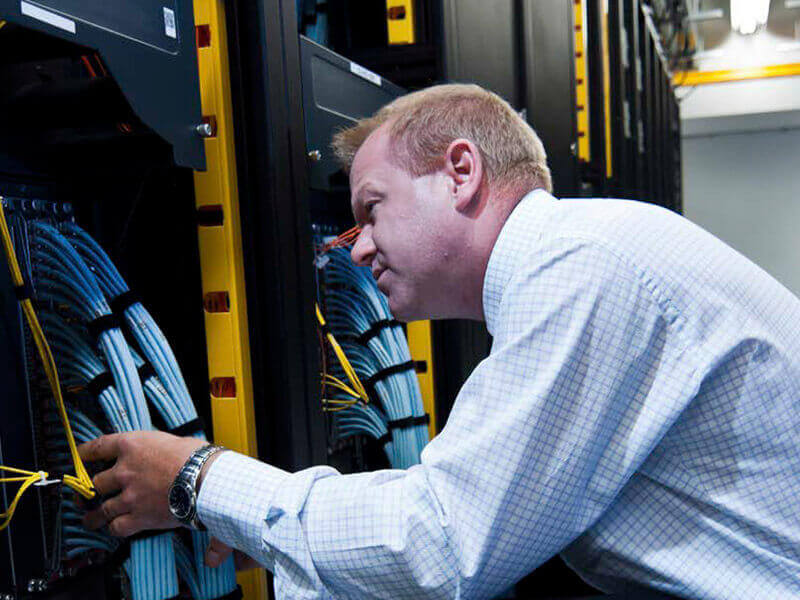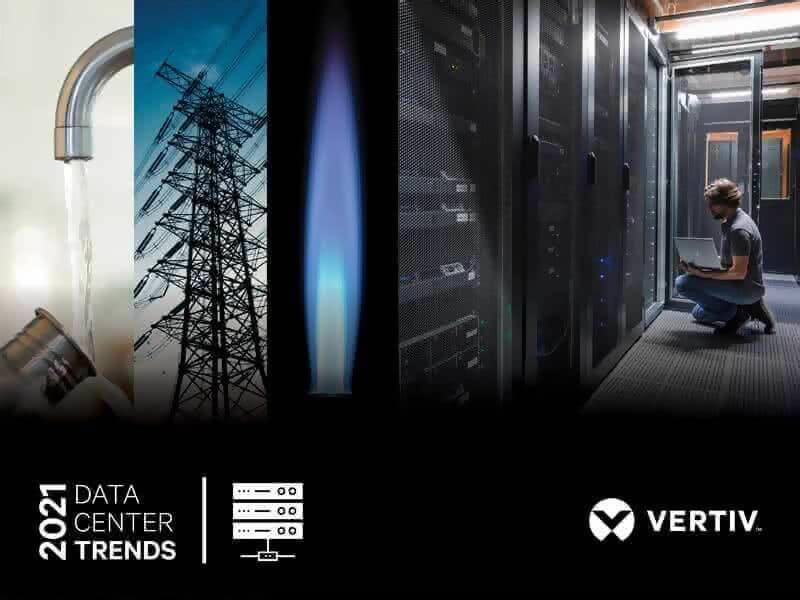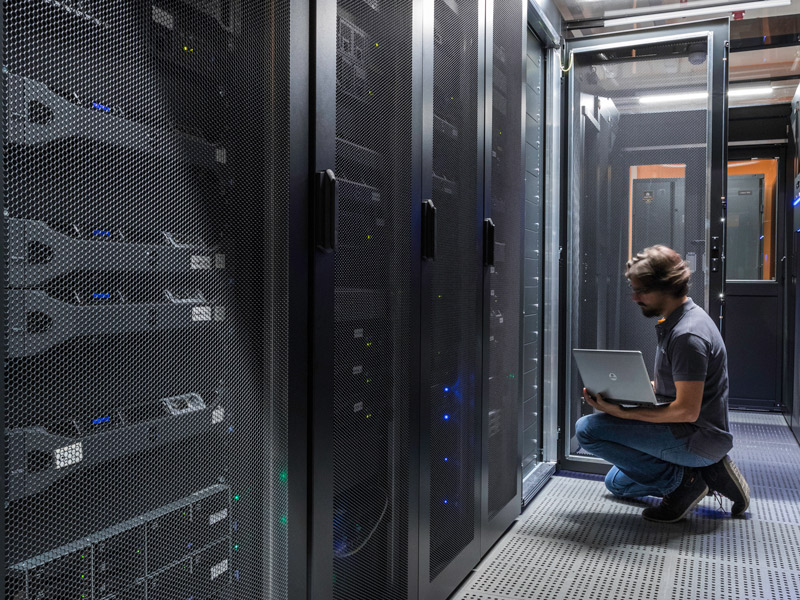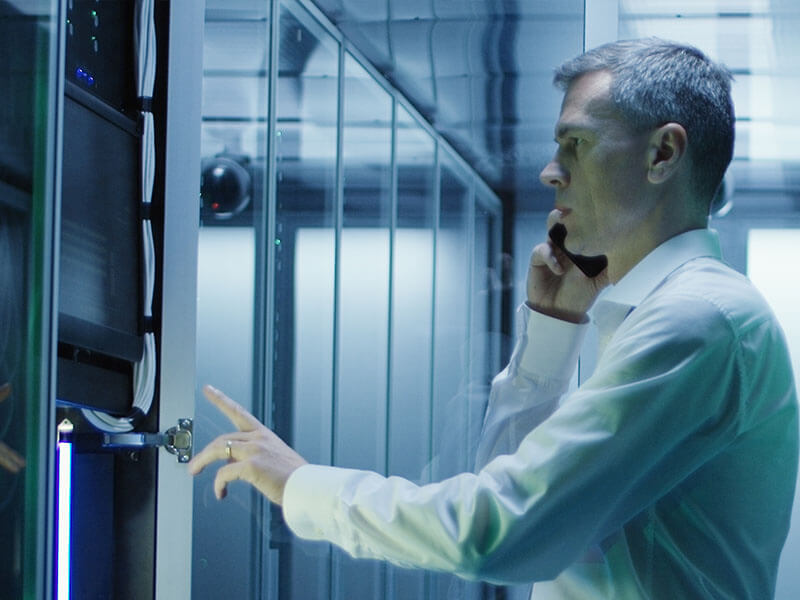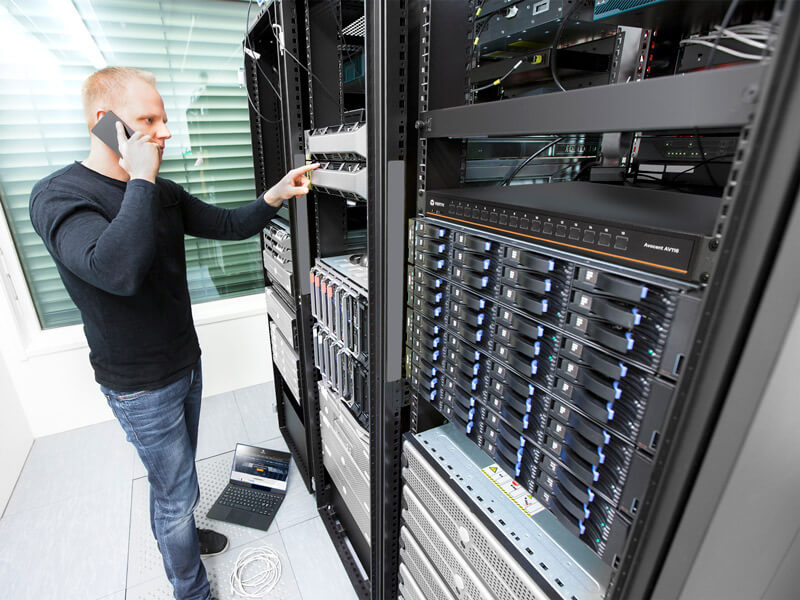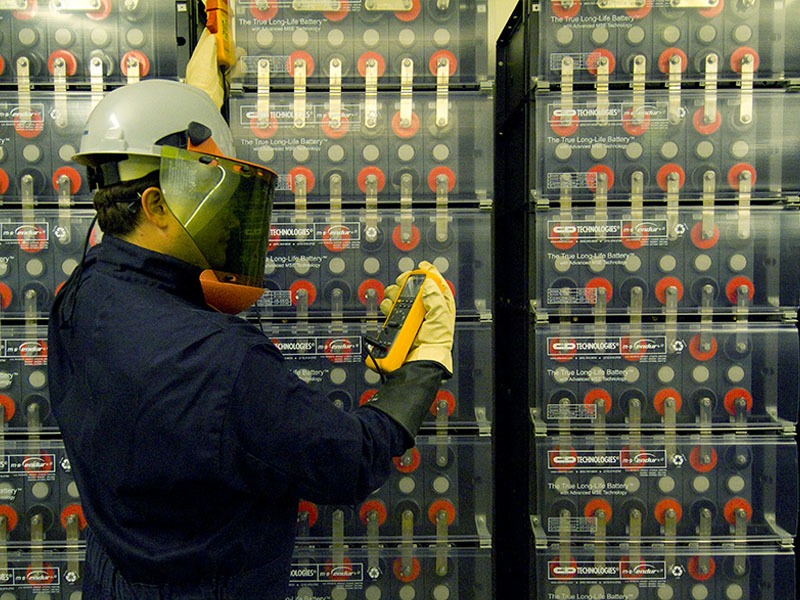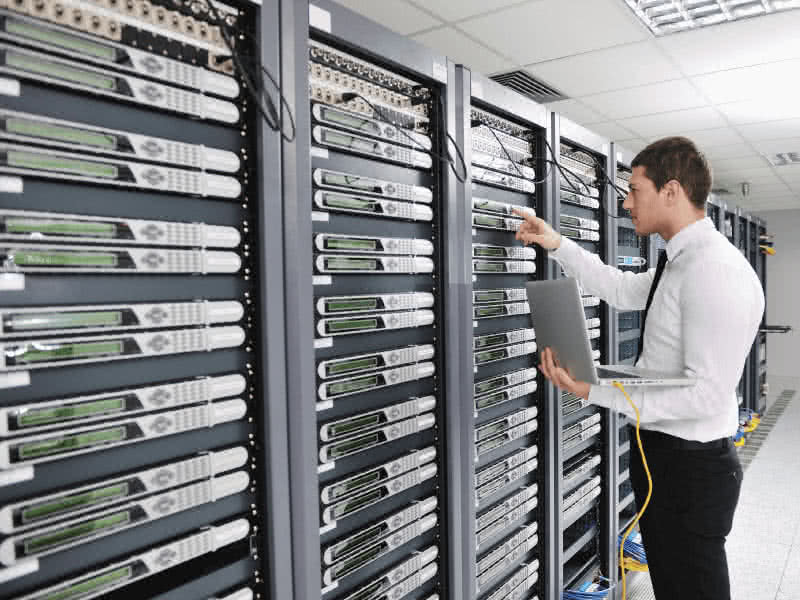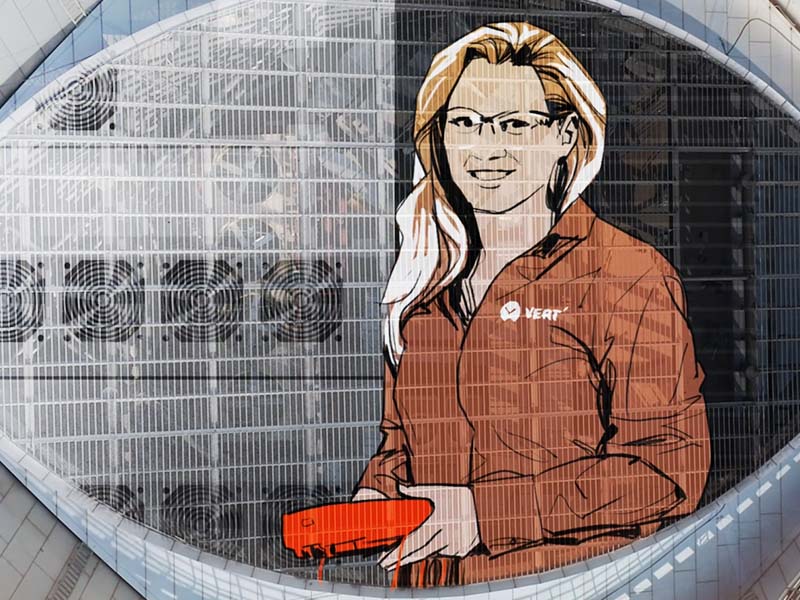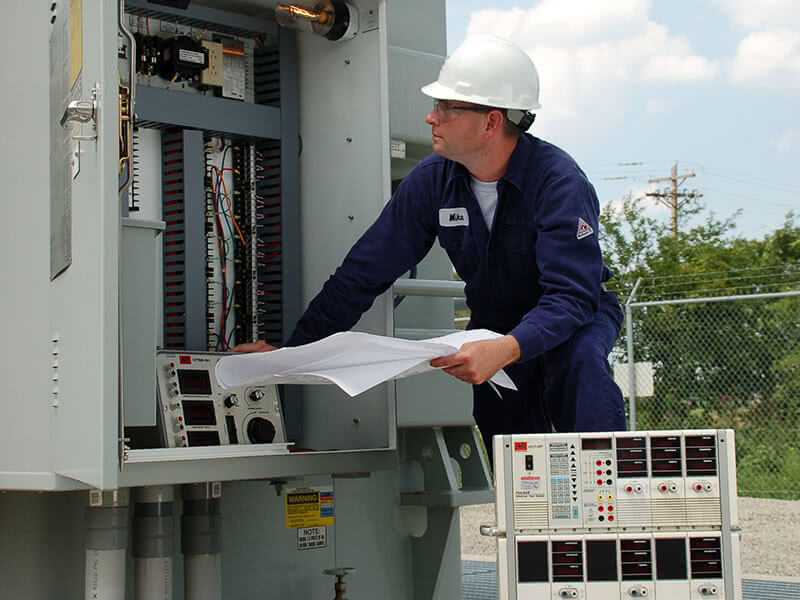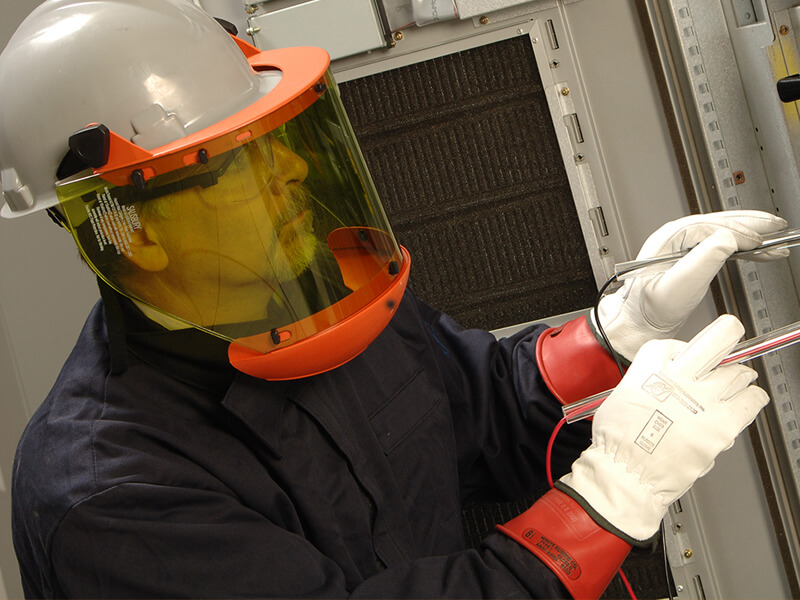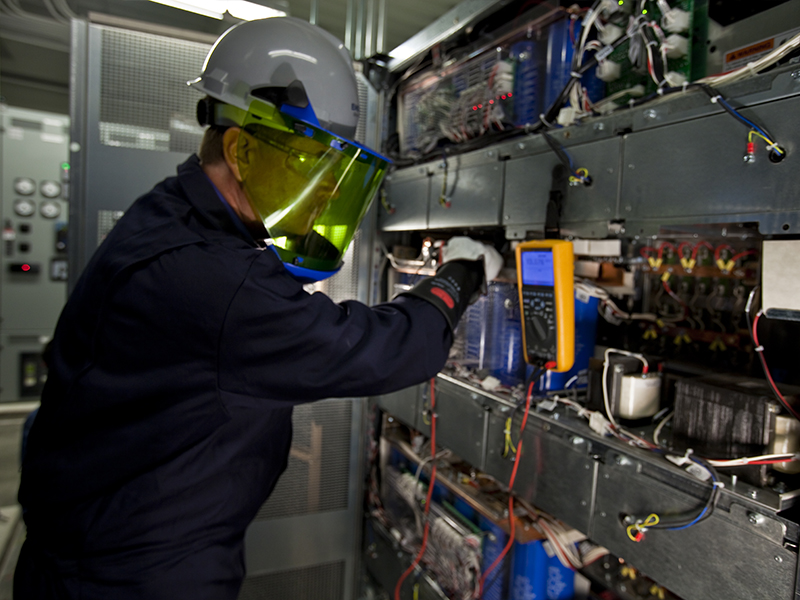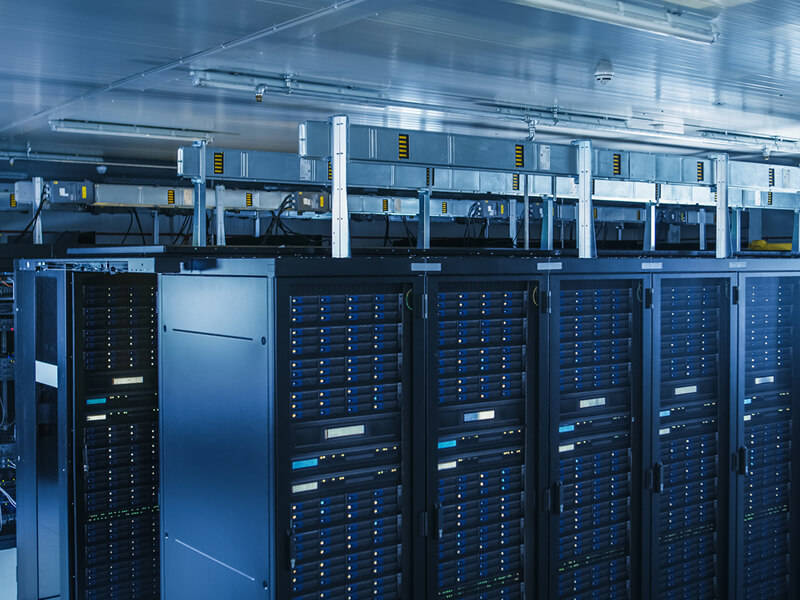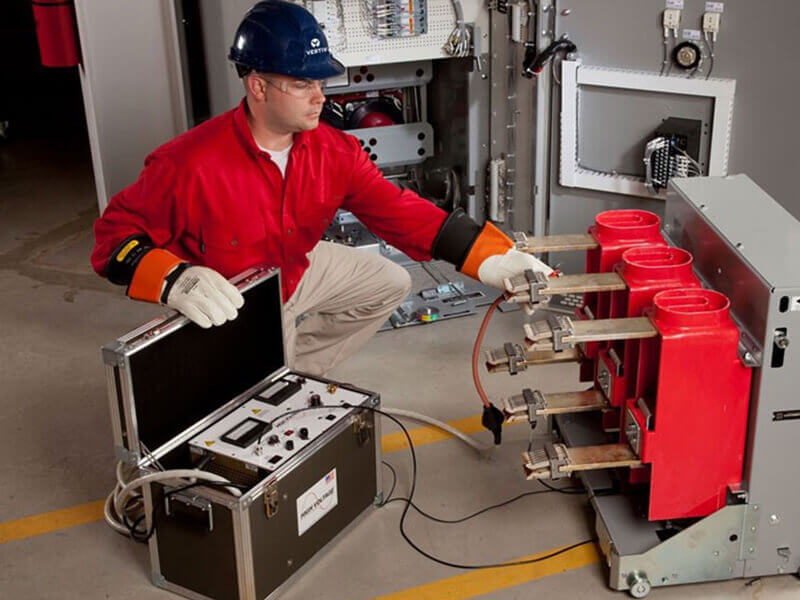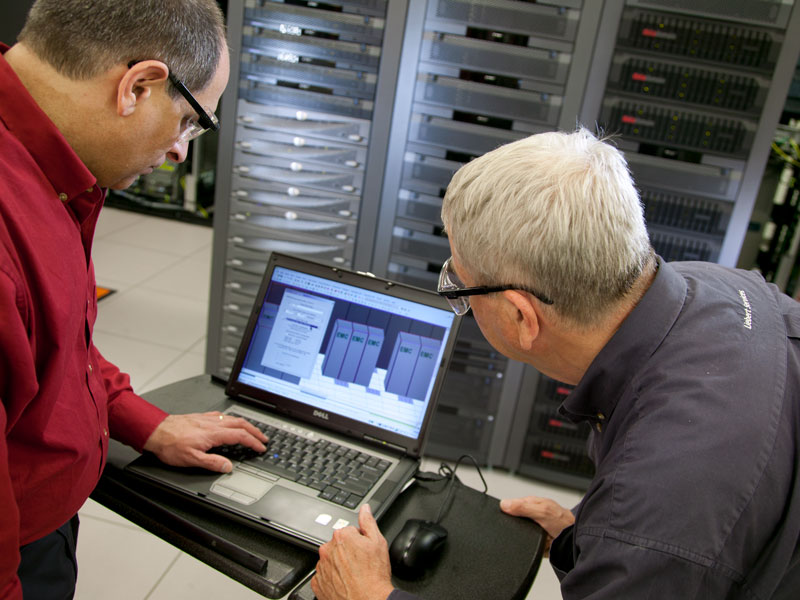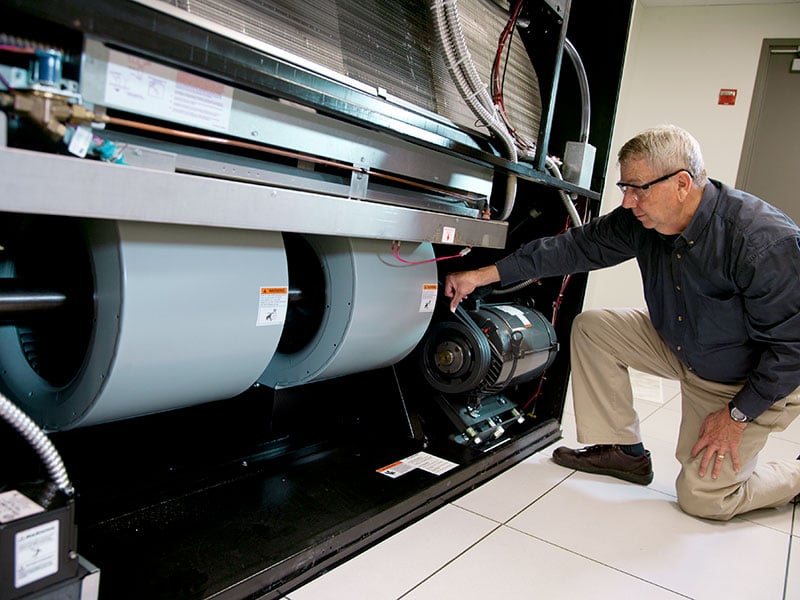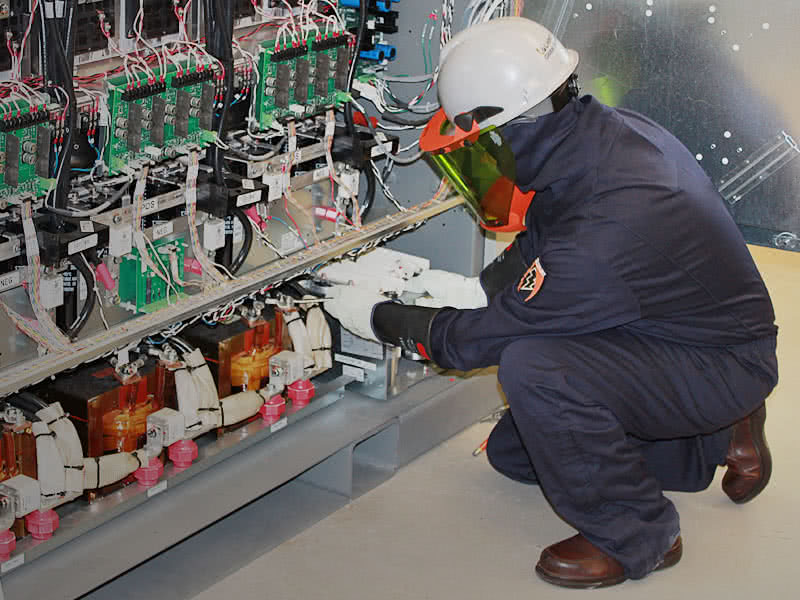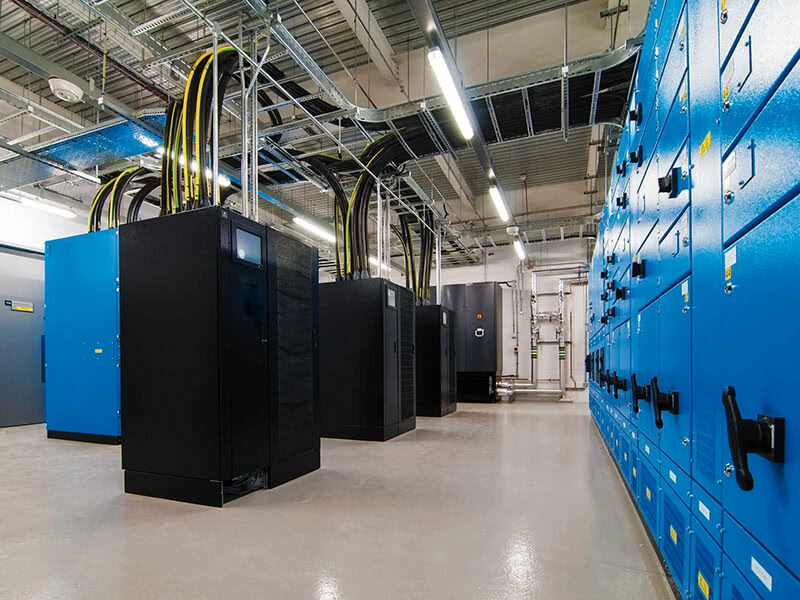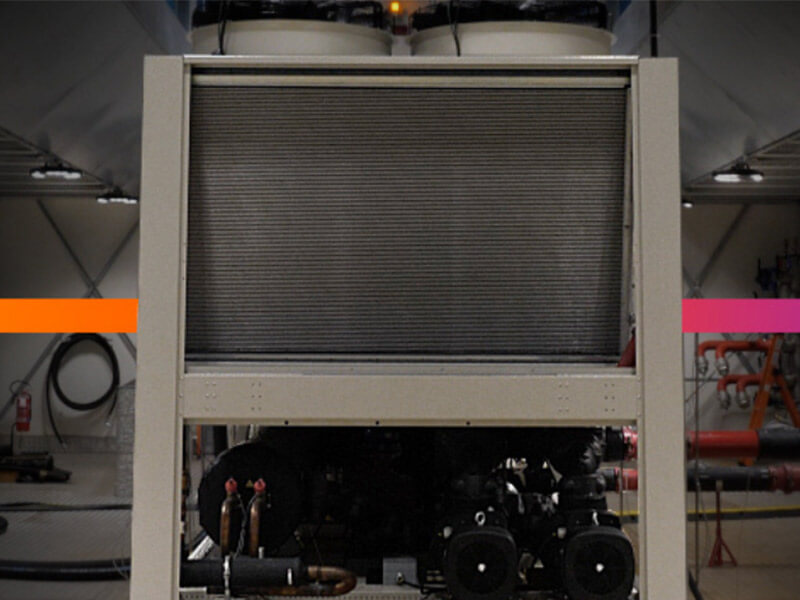
Vertiv Guide to Mission-Critical
Facility Services
What Are Data Center
Services?
Operators of data centers and facility managers typically oversee a growing computing footprint, whether they’re employed by enterprises, industry organizations, colocation or managed services providers, or telecommunications firms. These IT leaders are seeking to enable growth, maintain continuous availability of compute and storage resources, and optimize key operations all goals external service providers can help them achieve.
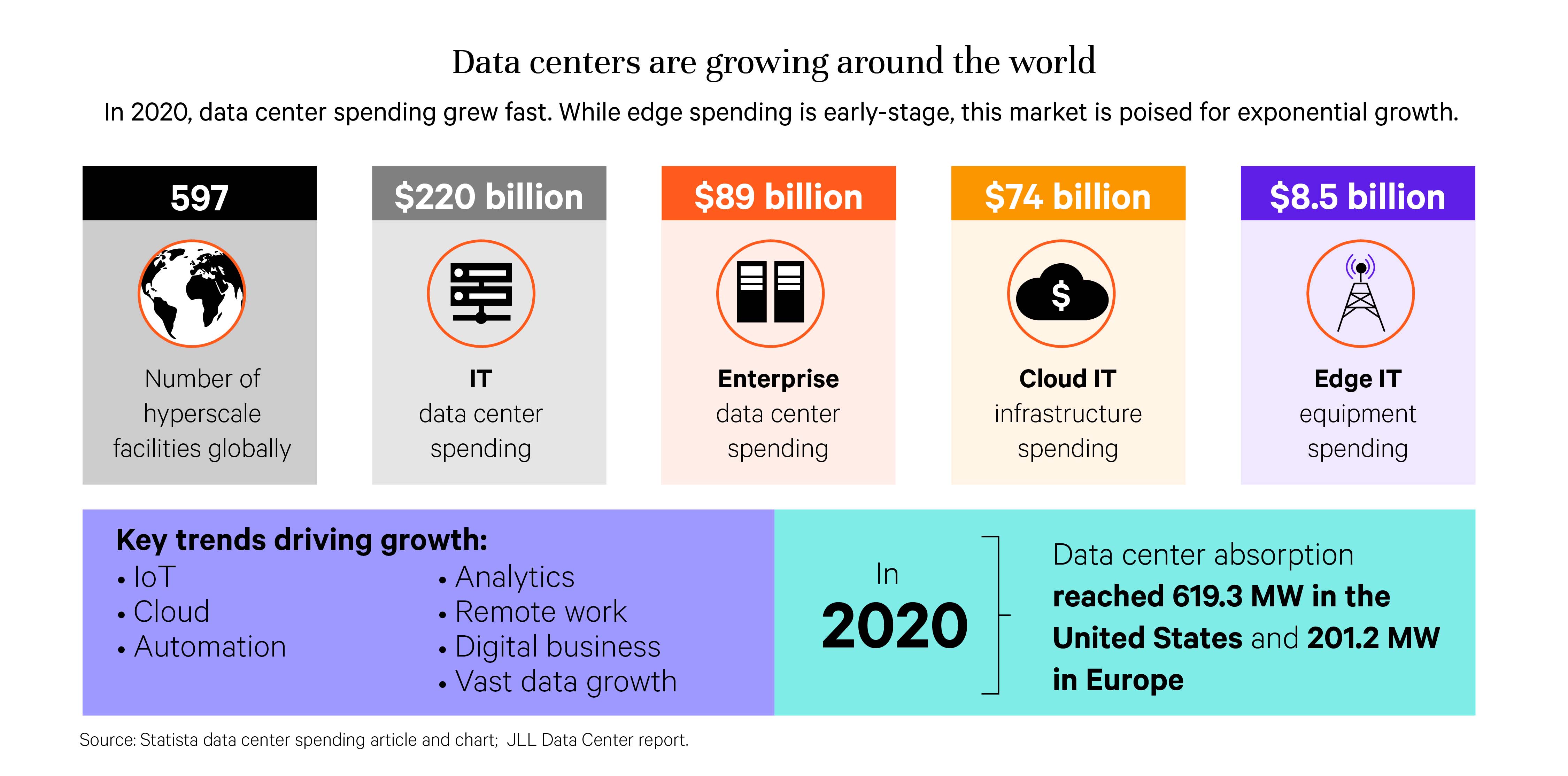
Source: Statista data center spending article and chart; JLL Data Center report.
Data center and facility leaders have a number of options when it comes to using outside services. They can outsource everything, using managed and colocation services, so that they can focus on business growth rather than IT management. Or these IT leaders can insource everything, operating data centers as a competency. This is the realm of hyperscale data center operators, who perfect every aspect of data center operations to manage vast facilities and global networks at scale. Or finally, IT leaders can tap their internal teams and a group of trusted external partners and vendors to plan, build, run, optimize, and grow their IT footprint. By so doing, data center teams can focus on strategic management, leaving key operational duties to their partners.
Most enterprise and small - to mid-size colocation organizations will likely choose the last approach to handling their IT network needs. In this scenario, an IT team manages part or all of the corporate network, while leveraging external resources to provide targeted expertise and services that extend their reach and ensure high availability and performance for data centers. For example, this IT team could work with partners to plan and commission a new facility; provide ongoing preventive maintenance services; upgrade and replace aging equipment; and gain ongoing monitoring, repair, and troubleshooting services.
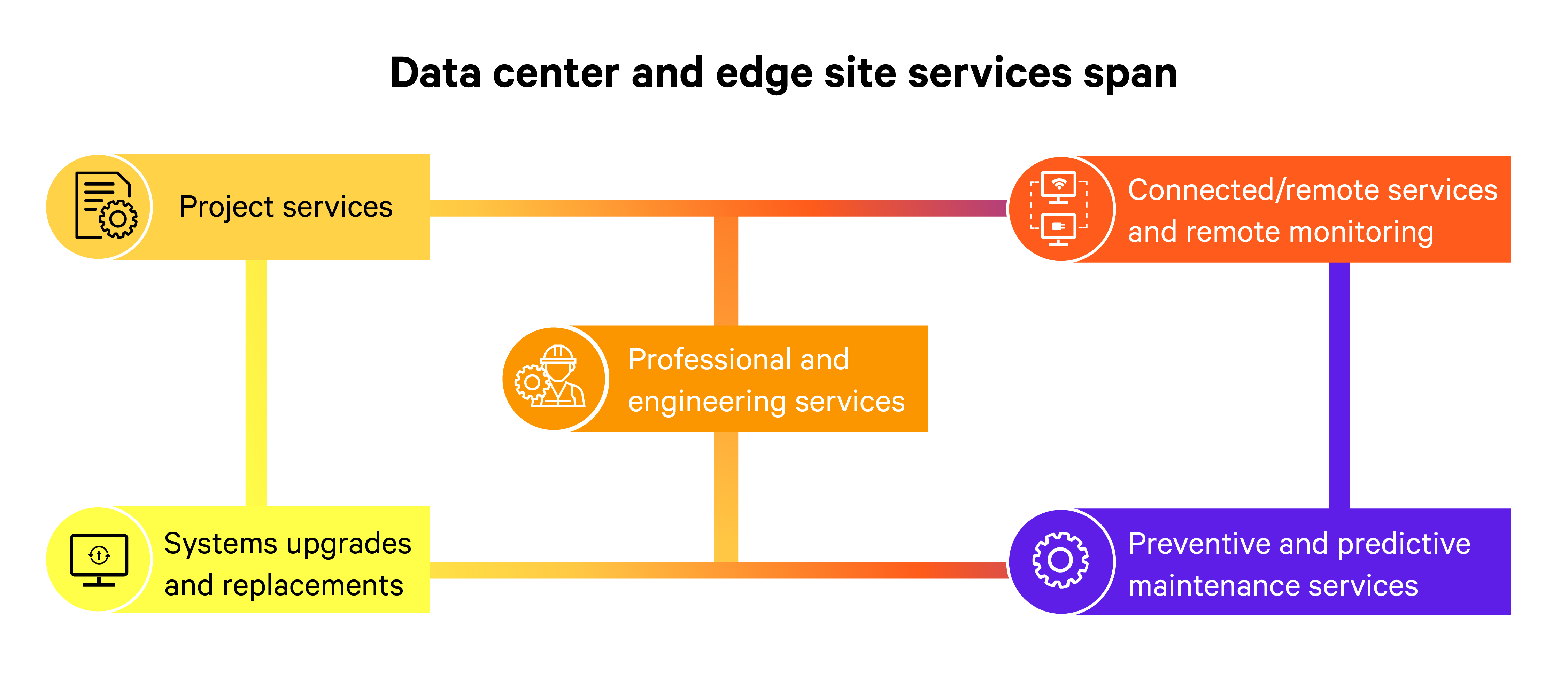
Why Plan for Services?
The answer is simple: Your organization is fast-becoming a digital business, and technology now undergirds almost everything you do. You’re seeking to achieve one or more of the following goals:

Source: AI Multiple and ZDNet
Go digital-first: You rely on high-performing compute capabilities to enable remote and on-site workforces, interact with customers, power the development of digital products and services, and automate routine actions. You’re adopting more cloud services than ever to accelerate these digitalization efforts. As you expand your distributed network, you may want to standardize your approach to ordering or installing equipment or plan for expansion in and across sites.
Capitalize on data: Your organization possesses a wealth of unstructured and structured data you’d like to capitalize on for automation, analytics, and other purposes. As a result, you’re densifying equipment in data centers and placing compute equipment where it’s never been before. This means that setting up the right power and cooling from the start is more important than ever. As you add more equipment, you’ll re-engage with partners to make sure your power and thermal management approach can scale to address new requirements.
Maintain availability: You require continuous connectivity and availability of both data center and edge site resources, to ensure your business continues to function as expected. Corporate network issues can harm the productivity of your teams, hurt the customer experience, and cost you lost revenues. As a result, you’re interested in monitoring your equipment condition at all times and conducting both predictive and preventive maintenance to keep your network up and functioning properly.
Improve power and cooling efficiency: Hyperscalers have become very precise when optimizing power and cooling. Enterprise and edge site managers may still need help with optimization to reduce costs and prevent undercooling or overcooling. However, capitalizing on 5G opportunities will lead to greater network density for everyone, increasing energy demands 3.5 times over more than the demand seen with. That means many will seek help from providers to source and deploy more efficient, sustainable products. As an example, telecommunications firms are using renewable energy to provide services to remote locations and begin future-proofing their approach to energy management.
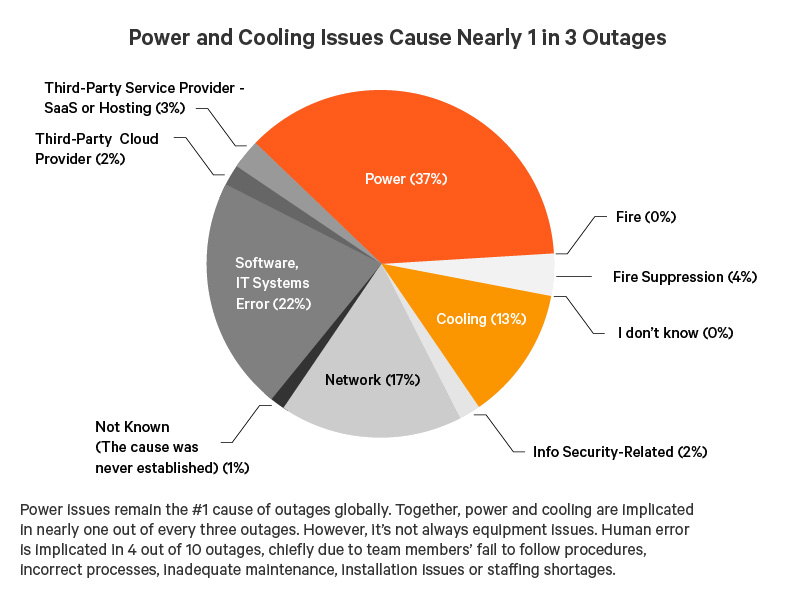
Source: Uptime Institute Report 2021
Manage a growing footprint: As a result of these trends, your data center footprint is growing. It may encompass on-premises networks, colocation data centers, and edge sites, located across one or multiple regions. You may be leasing, building, and outfitting new space to accommodate fast-paced growth and need project-based support. Or potentially, you’re standing up edge sites wherever you need them, and travel to these sites may not be feasible or desirable. You want to work with a trusted partner who can provide 24x7 support when and where you need it, upgrading and replacing systems proactively to keep business humming.
Key Qualities Your Service Partner Should Possess
Since you’re running more mission-critical workloads than ever, you need to work with a service partner who provides the right expertise and service mix. Your partner will be your right hand in keeping your sites up and running safely. This company should be highly responsive and available on a 24x7 basis to service your sites around one or more regions or even the globe. Let’s take a closer look at the capabilities for which data center teams are looking.
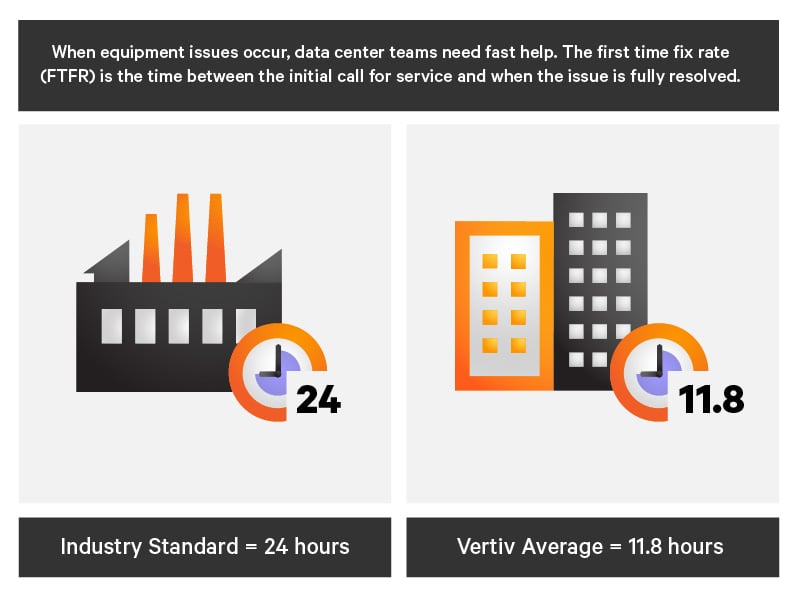
Source: Vertiv blog
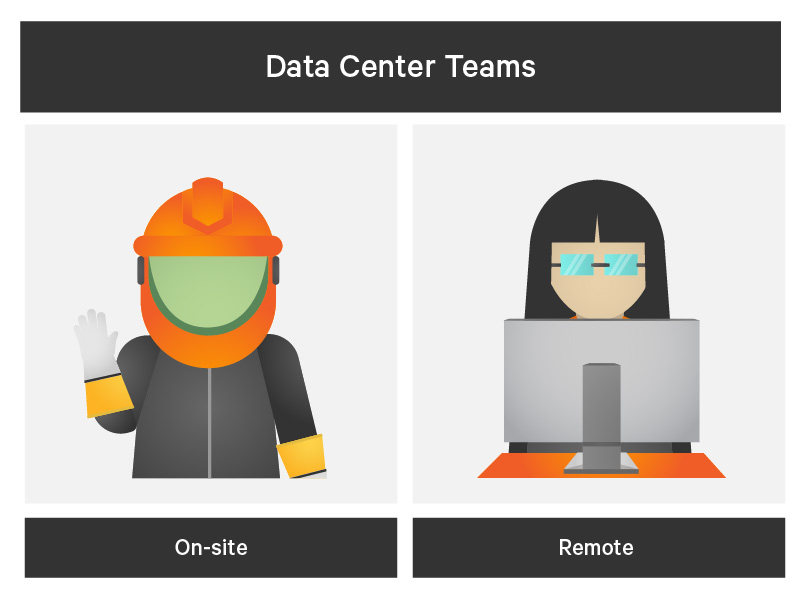
Broad-ranging expertise: Data centers can be incredibly diverse, ranging from enterprise data centers to managed services, colocation, and cloud data centers. Even edge sites, such as network or server closets or modular or mini data centers, are considered critical compute resources. While most are located on dry land near readily available power sources, others can be oceanfront or even located on top of water, as in the case of compute resources installed on an oil rig.
You likely want to work with a partner who can service any and all of your data centers, bringing the right expertise and services to bear to help you capitalize on key opportunities and anticipate and solve challenges. A service provider should be able to help you outfit white space, regularly test and maintain equipment, and help optimize performance. By so doing, you’ll reduce risk and decrease operational costs.
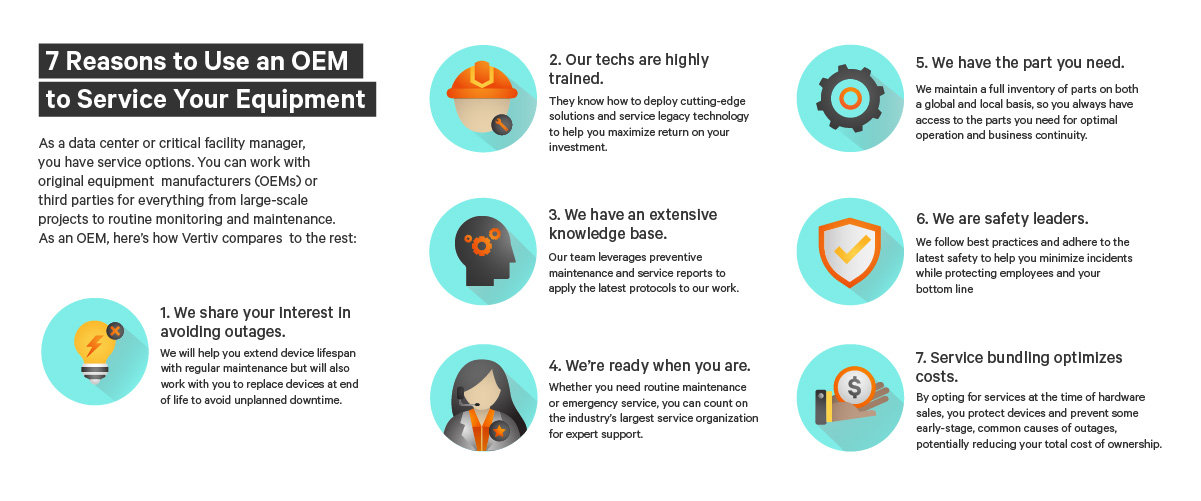
A commitment to reliability and safety: The pandemic has shone a brighter light on data center team reliability and continuity of services. Many enterprise teams pivoted to a mostly remote model to manage data centers, while leaning on partners to help provide other services. Essential service providers, such as original equipment manufacturers (OEMs), were able to access sites, install and service equipment, and provide other essential services when enterprise teams could not access these spaces.
At the same time, OEMs are designing equipment with a better user experience (UX) for data center staff. That means developing equipment that can be quickly and easily serviced, making components that may require servicing easy to access and ultimately reducing mean time to repair (MTTR). In addition, OEMs and data center teams must consider worker safety, as both staff and partners operate on or near high-voltage equipment.
Some of the world’s largest data centers require more than 100 megawatts (MW) of energy and receive and distribute 480-volt, three-phase power. OEM equipment that compartmentalizes low-voltage control circuits from high-voltage circuits reduce the risk of worker injury. That’s especially important if team members are reluctant to wear correctly rated personal protective equipment (PPE) and flame-resistant clothing.
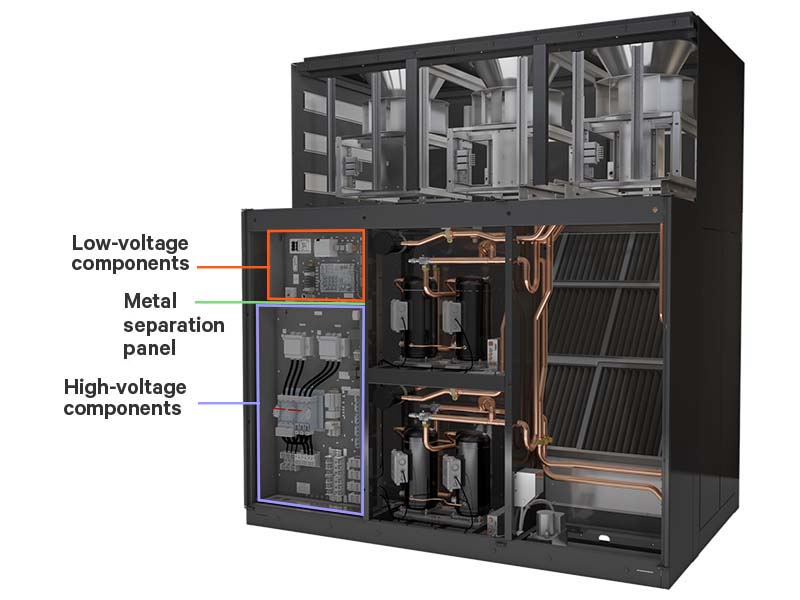
Service providers should have an on-time parts delivery record of 90% or greater, to ensure an exceptional mean time to repair (MTTR) for each and every incident.
A fast response time: Sometimes, the worst happens, despite your best efforts to prevent unplanned downtime incidents. Now, time is of the essence. Data center outages can range from tens of thousands of dollars to $100 million or more. You need fast, expert support to get your data center back online. At that point, you won’t be thinking about your service provider’s hourly rate!
The best time to prepare for this moment is before it ever occurs. There are some key variables to consider as you vet and select a service partner. These factors include the provider’s proximity to your facilities and speed of response time. Your provider should also demonstrate a commitment to maintaining a large, on-site inventory of original, never refurbished parts, and an ability to perform routine firmware upgrades. In addition, you’ll want to ensure that your service provider’s staff receive regular training and education and that the company has an exceptional safety policy and record.
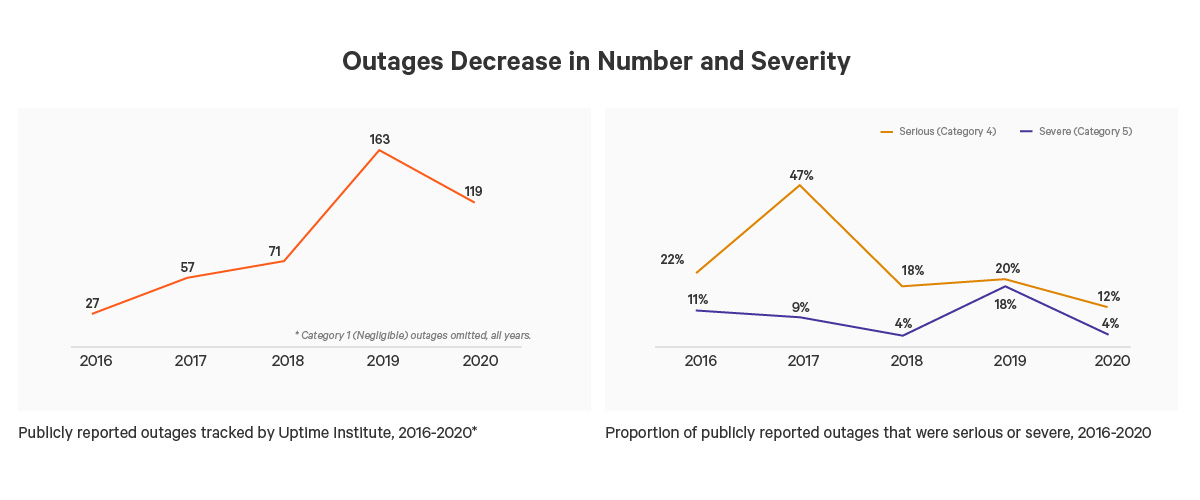
Source: Uptime Institute Report 2021
Both local and global coverage: Standardizing your service approach, equipment, and partners across your data center and other mission-critical facilities will yield long-term dividends. You’ll ensure consistent deployments and maintenance, enabling you to protect vital equipment and operations. You’ll also be able to reduce risk, improve reliability, maximize cost and time efficiencies, and forecast future service and equipment needs.
As an example, a diversified health and well-being company created a standardized thermal preventive maintenance program to service 39 facilities with cleanroom operations. These cleanrooms are used for pharmaceutical compounding operations and required that the air and temperature be tightly controlled to maintain their integrity. By standardizing it's approach, the company avoided thermal system failure and temperature fluctuations that could harm environments and products, while driving efficiencies across equipment purchase, installation, upgrade, and maintenance processes.
Resources
Types of Services Data Center Teams Need
Project Services
When launching new facilities or powering up new equipment, having industry experience and best-practice knowledge on your side helps you execute your project right — right from the start.
Commissioning: This service involves conducting quality assurance to determine that new data center processes, systems, and additions perform as expected. Equipment that is frequently commissioned includes electrical distribution equipment and systems, mechanical and HVAC systems, monitoring and controls systems, specialty systems (EPO, security, VESDA, fire/life safety), lighting controls, and structural systems.
Equipment Installation: You want to set up your data center for success. In addition to buying IT equipment such as servers, routers, switches, and storage, you’ll want to select the right power and cooling equipment to protect it. A service provider can deliver design engineering services to help you equip new facilities or expand existing ones. You’ll get the peace of mind knowing you’ve designed the right DC power system and chosen the right uninterruptible power supply (UPS). Since UPS systems are your last line of defense when utility power goes down, it’s important to choose them carefully.
Before you energize your power systems, protect your investment with independent, third-party testing. Electrical power system testing will enable you to validate equipment or uncover any issues that need to be addressed before use.
Project Management: Designing, deploying, and commissioning data center projects is a lengthy process with multiple interdependencies. A service partner will oversee different projects to ensure your go-live date goes as planned, so that you can achieve targeted return on investment (ROI).
Startup Services: When you experience an emergency, you need to recover quickly. An experienced service partner will provide the equipment, around-the-clock technical support, and dedicated project managers needed to get your systems or facility up and running again. By following your disaster recovery plan, a partner will also reduce your exposure to risk and help ensure a safe restart of your operations.
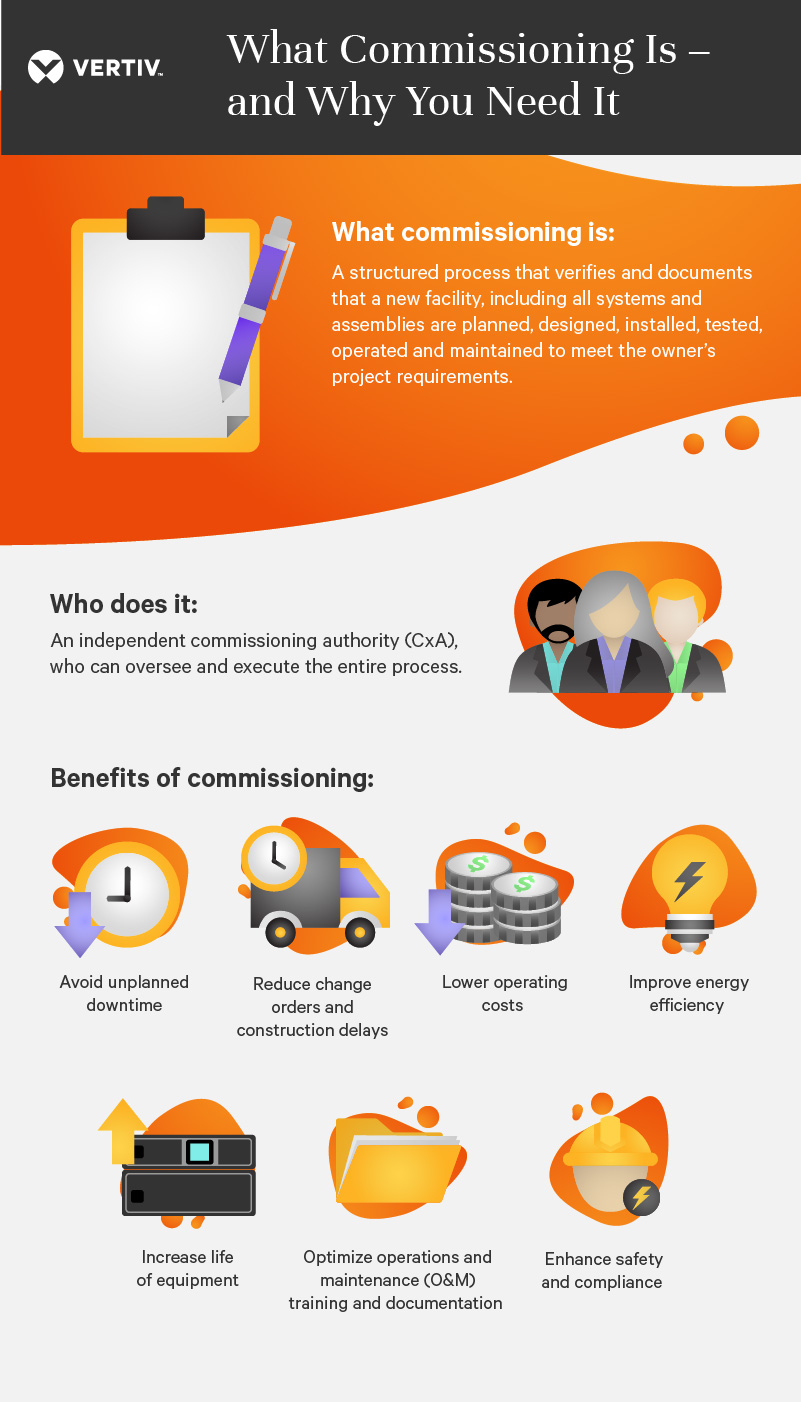
Source: Vertiv white paper and data sheet
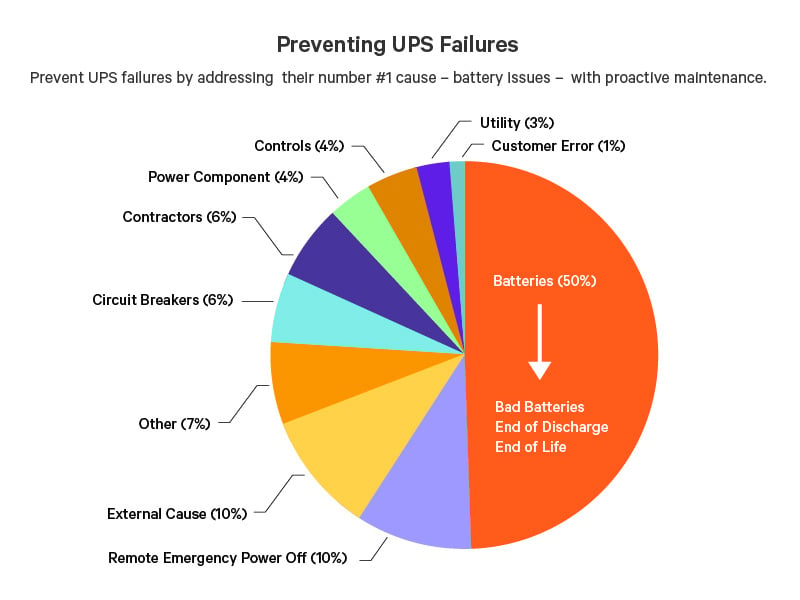
Source: Vertiv brochure
Preventive Maintenance Services
Power failures at any point along the network can impact data center operations and have serious consequences for the business. Preventive maintenance pays for itself by helping you avoid costly data center outages. These services include:
Battery Maintenance: Batteries are a leading root cause of data center downtime. Managing battery availability proactively with a maintenance program can help reduce this source of risk. You’ll gain insight into system anomalies and end-of-life trends and be able to replace batteries before they go bad and put your entire backup power system at risk.
AC Power Services: Scheduled preventive maintenance and proactive replacement of key UPS components and batteries can greatly reduce the chances of failure during power incidents. Power preventive maintenance services performed by highly experienced and OEM-trained technicians include operational checks, component replacements, and comprehensive reporting. These services will maximize your power system availability, even amidst power outages, utility spikes, switching transients, line noise, and other power-related issues.
DC Power Services: Telecommunications operators and communication network owners require constant availability and maximum energy efficiency. These companies use command and control systems to scale power and thermal services. They also harness the latest technology innovations to reduce unnecessary power consumption, optimizing the balance sheet. For these demanding users, only intelligent engineered DC power, distribution, control, and monitoring systems will do.
Monitoring Services: You need your critical assets to function 24 hours a day, seven days a week. Continuous monitoring and data analysis by remote engineers give you industry-leading expertise and troubleshooting without adding extra manpower. Technicians remotely identify, diagnose, and fix problems affecting your critical equipment before they escalate. With monitoring services, you get proactive response and peace of mind.
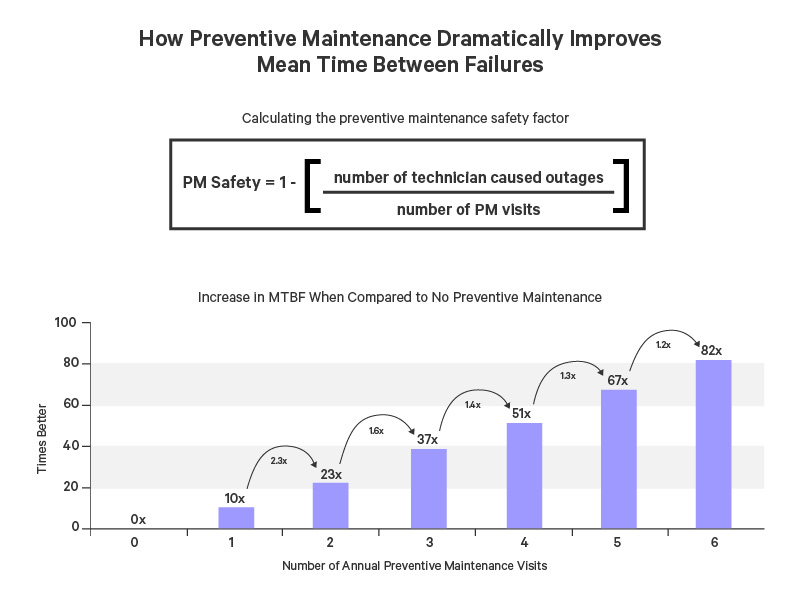
Source: Vertiv white paper
Thermal Management: Data centers require specialized thermal management. A service provider can provide warranty inspection services to maximize the performance, availability, and efficiency of your precision cooling equipment. Trained technicians can also conduct preventive maintenance, providing you with the coverage, parts, labor, and emergency services you require. Optimization services will help you meet increased demands for capacity and efficiencies with appropriate controls, set points, and configurations. Strategic upgrades can help you extend the life of your equipment and lower operating costs. Finally, remote monitoring ensures that your business-critical network is protected 24x7.
Emergency Services: When incidents occur, they need to be rapidly resolved. Fully qualified service technicians will perform troubleshooting, damage assessments, inspections and testing, equipment repair and reconditioning, and spare parts installation. They’ll also provide detailed reporting on what went wrong and how issues were addressed, so that you can prevent similar recurrences in the future. Troubleshooting and repair services guarantee a fast return to operation, reduced risk and liabilities, decreased rework, and fewer change orders.
Professional and Engineering Services
Arc/Flash Study: Arc flashes cause worker injuries and fatalities, resulting in costly hospitalizations and lawsuits, as well as poor worker morale. As a result, the National Fire Protection Association (NFPA) updates NFPA 70E: Standard for Electrical Safety in the Workplace® every three years. A service provider can use an engineering analysis method to help you determine the proper arc flash boundary distance and PPE requirements at your site. Professional electrical engineering and testing firms offer state-of-the art software and regulatory and data expertise, helping you protect workers and save lives.
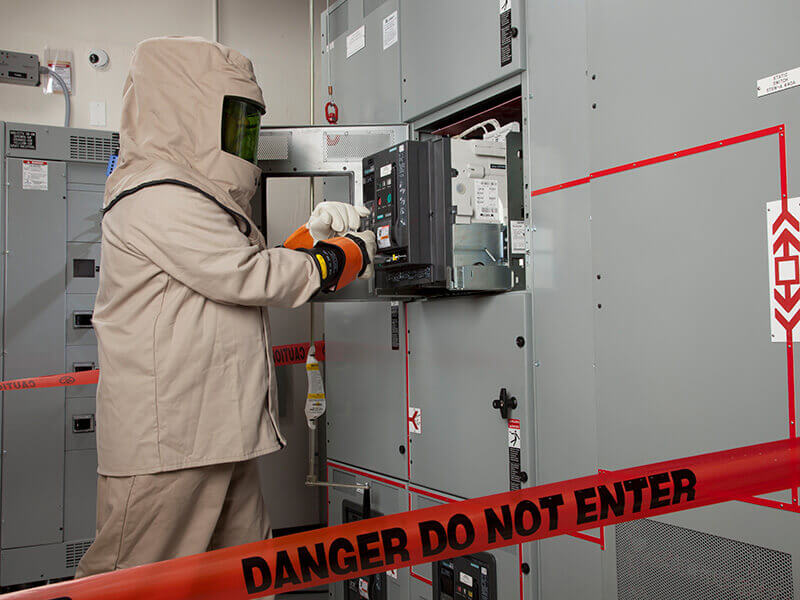
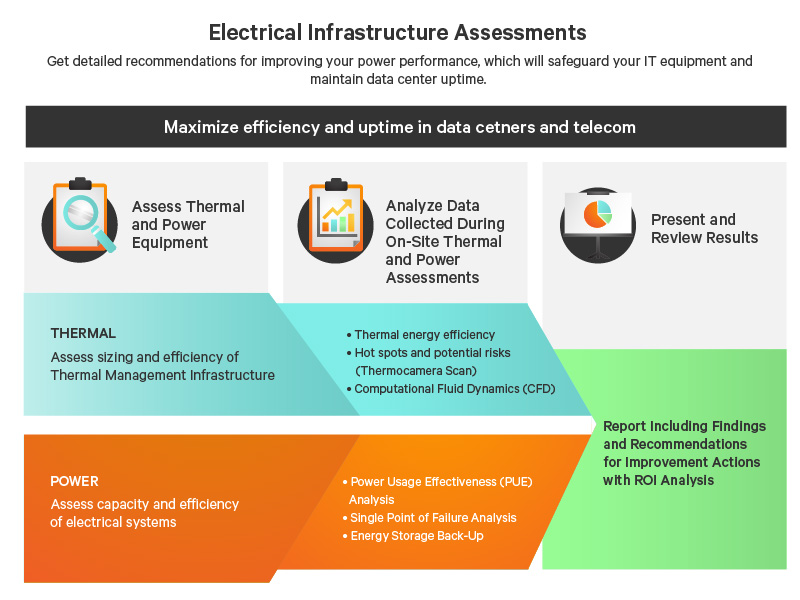
Source: Vertiv brochure
Short Circuit and Coordination Study: This study evaluates a system’s protective devices and the circuits they protect to determine how long equipment can sustain operation without damage or failure. It helps ensure that you provide power transformers, switchgear, substations, motor control centers, panelboards, and other equipment with enough protection to minimize service interruption under overload and short-circuit conditions.
Power Quality Study: This study can identify the source of disturbances such as grounding issues and harmonic distortions, as well as recommend solutions to ensure optimal system performance. It helps operators of advanced process controls and industrial machinery deliver a higher level of power quality, ensuring the smooth operation and extended service life of equipment.
Load Flow and Power Factor Studies: Load flow studies help you identify and correct power system issues including overloads and imbalances, harmonic problems, poor power factors, and more that can cause operational inefficiencies and performance problems. A service provider can evaluate your component and circuit loading, power factor and system losses, and real and reactive power flow. You’ll get focused recommendations to fine-tune your electrical system for optimal efficiency and capacity.
Electrical Infrastructure Assessment: This assessment is a vital tool that helps you protect your IT investment. It will identify gaps in electrical equipment maintenance, evaluate electrical system design against current IT needs, and demonstrate how to improve IT system availability and plan for new capacity. You will gain a detailed analysis and clear recommendations for electrical equipment, maintenance, and operational improvements necessary to get the most out of your data center.
Data Center Efficiency Assessment: This assessment evaluates data center availability and efficiency against industry best practices to identify opportunities for optimization. It specifically evaluates the extent to which cooling and power architecture is leveraged, the level of redundancy in place, the efficiency of installed systems, presence of hot spots, use of floor space, and air distribution versus heat dissipation. You’ll get detailed recommendations that are backed by ROI calculations. These recommendations will help you consider and prioritize the best options for improving performance, capacity, availability, and efficiency of your power and cooling equipment.
Single-Line Diagram: As any data center manager knows, it’s critical to have up-to-date, accurate engineering drawings and documentation. A service provider can modify your existing CAD drawings or create new drawings, such as one-line diagrams, control schematics, wiring drawings, panel elevations, and more.
Renewable Energy Services: Telecom operators are facing increased demand for network access and mobile broadband. 5G will only accelerate this growth. As a result, telecoms are adopting a hybrid approach to energy management. They’re incorporating renewable energy to extend services to remote areas where the grid is absent. A service provider can help by offering project services to launch facilities and power up new equipment, as well as performance services to optimize energy usage. In addition, the service provider can deliver ongoing maintenance services to ensure equipment performs at required levels.
System Upgrades and Replacements
Proactive upgrading and replacement of your critical power equipment will ensure system reliability and prevent costly downtime. These services include:
Variable Speed Drives (VSD) Upgrades: Load demand in your data center changes all the time. But chances are the fan speed and airflow from your legacy computer room air conditioning (CRAC) system likely remains constant and may be set to peak loads, which rarely exist. A VSD upgrade allows you to match motor speed to changing load demand. You’ll be able to increase your energy efficiency by up to 50% without harming system performance. You will put less wear and tear on your thermal equipment, while potentially reducing electrical costs by thousands of dollars per year per CRAC unit.
Full Bank Capacitor Replacement: Your UPS systems use large capacitor banks made up of both DC electrolytic and AC polymeric film capacitors that degrade over time. A service provider can proactively replace your full bank of capacitors to achieve a long service life and avoid unplanned downtime.
EC Plug Fan Retrofit Upgrade: Electrically commutated (EC) fans are an innovative technology that offers exceptional value. When integrated with continuous speed control across the full operating range of thermal management units, EC fans provide a simple, cost-effective way to introduce energy-efficient technology. They do so by regulating airflow and reducing fan input power. A service provider can perform an EC fan upgrade, saving you thousands of dollars in operating costs by reducing fan power consumption by up to 50%.
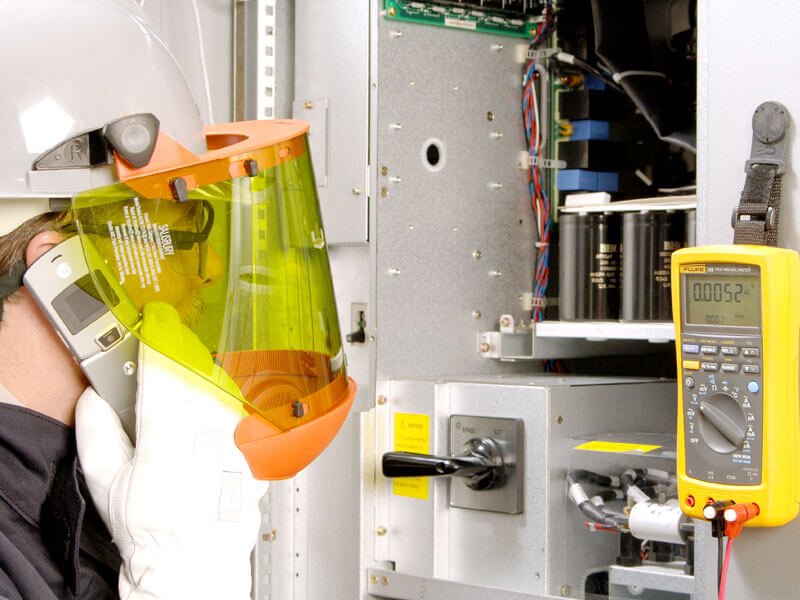
UPS Capacity Upgrades: Proactive servicing of your UPS batteries is one of the most cost-effective measures you can take to ensure system reliability and prevent costly downtime. A service provider can provide you with mobile DC power services during system maintenance; install, upgrade, and replace equipment; and perform preventive maintenance of your batteries, UPS units and generators. In addition, your partner can perform remote monitoring of your battery voltage, current, and temperature, as well as conduct periodic tests of your batteries’ internal resistance.
Connected and Remote Services
Data center teams managing multiple sites want to achieve economies of scale — automating processes, streamlining daily operations, and increasing cost efficiencies. A service provider can offer remote services, including diagnostics, monitoring, and remote system restoration. These services keep critical systems up and functioning, while freeing your data center team to do higher-level work and provide more value to your customers.
Remote Monitoring and Management Services: A service provider can offer continuous monitoring and data analysis by remote engineers to quickly, accurately, and safely restore equipment to its proper operating condition. These services provide detailed information on the cause of particular alarm conditions, identify potential future problems, and offer information on performance trends to improve infrastructure management.
For example, telecom providers are held to an exceptionally high standard for service delivery. As a result, they’re looking for network-wide visibility into their operating conditions. A European telecom that deployed a real-time infrastructure monitoring and management platform reduced alarms by 19% while improving first-time resolution by 92%. Another company, a mobile network operator, achieved an even more dramatic reduction in alarms, decreasing them by 70%. This prevented unnecessary service visits, while optimizing data center personnel workloads.
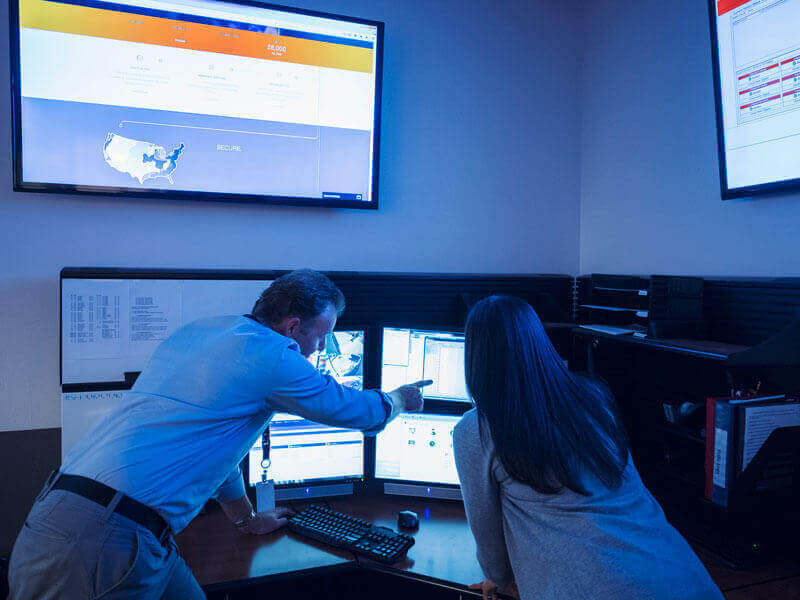
Wireless Sensors Network: A wireless sensor network provides an easily deployed platform that improves environmental visibility. With this visibility, data center teams can gain coverage for large areas, reduce deployment costs, and decrease network complexity. Data security is enhanced with proprietary data packet validation, layered encryption, and user approval requirements. The network can also be integrated with remote monitoring and management tools, enabling teams to oversee systems with a single user interface.
Why You Should Prepare for the Worst
Partnering with a service partner across your data center lifecycle will help protect you against these common issues, that could cause unwanted outages:
Disaster Recovery: The risks your facility faces include natural disasters, such as hurricanes, flooding, fires, and earthquakes; as well as harm to your facility, staff, equipment, and data.
It pays to have a solid business continuity and disaster recovery (BC/DR) strategy and plan. This plan should involve how to automatically transfer mission-critical workloads to other equipment and sites (failover), as well as offer a step-by-step guide for continually monitoring your data center for new risks. In addition, you should have standardized policies and procedures to implement when certain types of incidents occur. Do you have the right staff in place in the event of an emergency? Will they have secure remote access to equipment, and will your vendors be able to support you? Your service partner can provide you with a BC/DR checklist, review your current strategy and plan for gaps, test your equipment regularly, and perform scheduled audits.
As an example, many data center teams were prepared for equipment failures and weather issues, but not a pandemic. In the early days of the most recent pandemic, teams scrambled to set up secure remote access; develop contingency plans for staffing; and shore up supply chains. As a resullt, pandemics are now a part of all data center BC/DR plans.
Power Outages: More than 56% of data center teams reported an outage exceeding $100,000 in 2020 with 16% of this total citing outage costs of more than $1 million. Source: Uptime Institute, 2021. However, costs for hyperscalers or extended outages can obviously range into the millions of dollars. Beyond costs, data center outages create significant business disruption, result in lost customer revenues, and create recovery costs. Protecting your data center equipment with proactive power and cooling servicing can thus be one of the best investments you’ll make.
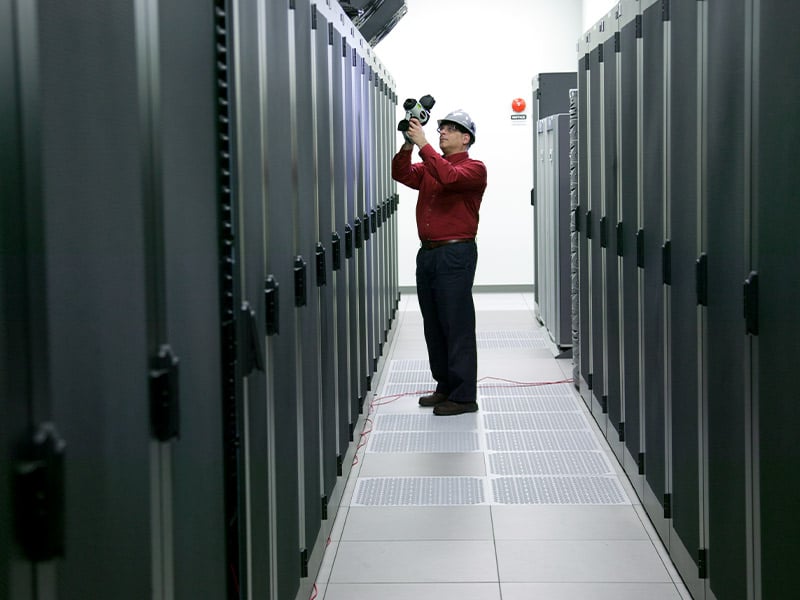
Cooling Concerns: Data center operators are evaluating liquid cooling options, as processing-intensive computing applications grow and air cooling shows its limits. The market for liquid cooling is slated to grow rapidly to $6.5 billion USD by 2027, as organizations adopt more cloud services, use artificial intelligence (AI) to power advanced analytics and automated decision making, and enable blockchain and cryptocurrency applications. Source: Global Market Insights, July 2021.
A service provider can help you examine your options for liquid cooling and how to apply and scale it in your data center. This may involve retrofitting existing spaces or designing new data centers to accommodate new cooling technology.
There are two principal types: immersion cooling, in which servers and other IT equipment are submerged in coolant liquid in tanks; and direct-to-chip cooling, where liquid coolant is fed directly into computer chips in data center equipment to keep them cool.
Resources
Conclusion
Every business needs to build a unique continuity blueprint to ensure its critical infrastructure is available, sustainable, and future-ready.
Vertiv architects your continuity across your global facilities and infrastructure to ensure you achieve your business goals and deliver an exceptional experience to your customers and users.
We help you manage your infrastructure across its lifecycle designing, building, deploying, managing, monitoring and maintaining it. Our expertise and global reach allow us to deliver a level of service that is uncompromising and consistent, wherever you’re located and whatever your data center model and technology.
With more than 100,000 implementations across the world, Vertiv field service engineers and technical support staff are highly skilled and serve as part of the largest service organization in the market today. They draw on an extensive knowledge base, standardized processes and procedures, and Vertiv’s market-leading equipment to deliver exceptional results. Count on Vertiv to help manage your project successfully from planning through approvals; improve your equipment availability and efficiency; monitor and manage infrastructure; and respond swiftly in the event of an incident.
You benefit by working with a global partner with a demonstrated track record for ensuring equipment reliability and uptime, reducing your total cost of ownership, and developing innovative new solutions that reduce energy use.

